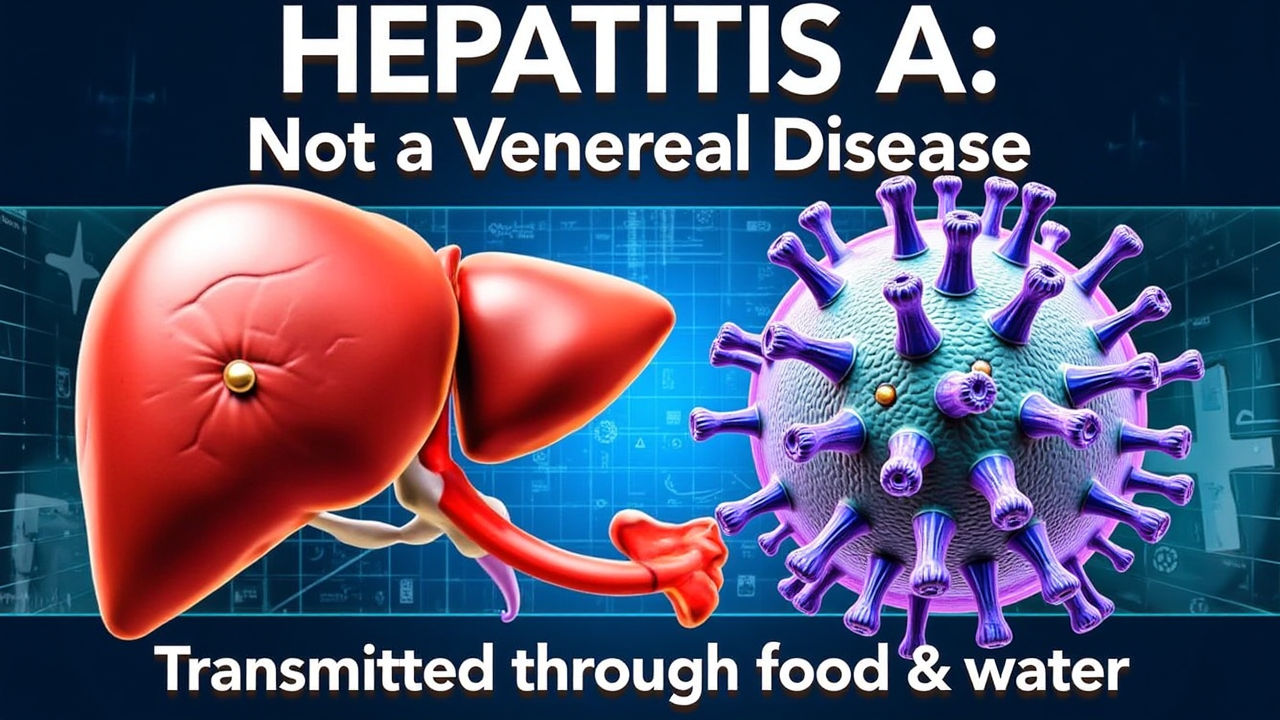When it comes to infectious diseases, misconceptions abound—especially regarding how they spread. One question that frequently arises is: Is hepatitis A a venereal disease? This query is not just academic; it impacts public health awareness, prevention strategies, and stigma surrounding the disease. In this article, we will dissect this question with clinical precision, expert insights, and practical wisdom to provide a definitive answer. Along the way, we’ll explore hepatitis A’s transmission routes, symptoms, prevention, and how it differs from sexually transmitted infections (STIs).
Understanding Hepatitis A: A Primer
Hepatitis A is a viral infection caused by the hepatitis A virus (HAV), primarily affecting the liver. Unlike hepatitis B and C, which can cause chronic liver disease, hepatitis A is typically acute and self-limiting. The virus is a non-enveloped RNA virus belonging to the Picornaviridae family.
Transmission Pathways: The Core of the Question
The hallmark of hepatitis A transmission is the fecal-oral route. This means the virus is shed in the feces of infected individuals and can contaminate food, water, or surfaces. When another person ingests the virus—often through contaminated food or poor hygiene—the infection can take hold.
Key transmission modes include:
- Consuming contaminated food or water
- Close personal contact with an infected person (e.g., household members)
- Poor sanitation and hygiene conditions
This fecal-oral transmission is distinct from the classic routes of venereal diseases, which primarily spread through sexual contact involving exchange of bodily fluids such as semen, vaginal secretions, or blood.
Is Hepatitis A a Venereal Disease? The Definitive Answer
No, hepatitis A is not classified as a venereal disease. Venereal diseases, or sexually transmitted infections (STIs), are infections primarily transmitted through sexual contact. Hepatitis A’s primary transmission is fecal-oral, not sexual.
However, this answer requires nuance. While hepatitis A is not a venereal disease, sexual contact can sometimes facilitate transmission, especially in practices involving oral-anal contact (anilingus). This is a less common but recognized route, particularly among men who have sex with men (MSM).
Why This Distinction Matters
- Public Health Messaging: Mislabeling hepatitis A as an STI can lead to stigma and misdirected prevention efforts.
- Prevention Strategies: Emphasizing hand hygiene and safe food practices is more effective than focusing solely on sexual behavior.
- Clinical Diagnosis: Understanding transmission helps clinicians assess risk and recommend appropriate testing and vaccination.
Hepatitis A vs. Venereal Diseases: A Comparative Overview
| Feature | Hepatitis A | Typical Venereal Diseases (e.g., Chlamydia, Gonorrhea) |
|---|---|---|
| Causative Agent | Hepatitis A virus (HAV) | Various bacteria, viruses, parasites |
| Primary Transmission | Fecal-oral route | Sexual contact (vaginal, anal, oral sex) |
| Chronic Infection Risk | No (usually acute and self-limiting) | Often yes (e.g., HIV, herpes, hepatitis B, C) |
| Prevention | Vaccination, hygiene, sanitation | Barrier methods, vaccination (HPV, hepatitis B), testing |
| Symptoms | Jaundice, fatigue, nausea | Varies widely; often genital symptoms |
Symptoms and Clinical Course of Hepatitis A
Hepatitis A symptoms typically appear 2 to 6 weeks after exposure and can include:
- Fatigue
- Fever
- Loss of appetite
- Nausea and vomiting
- Abdominal pain
- Dark urine and pale stools
- Jaundice (yellowing of skin and eyes)
Most people recover fully within a few weeks to months without lasting liver damage. Severe cases are rare but can occur, especially in older adults or those with pre-existing liver conditions.
Prevention: Practical Wisdom for Physical Health
Given the fecal-oral transmission, prevention focuses on:
- Vaccination: The hepatitis A vaccine is highly effective and recommended for travelers to endemic areas, people with chronic liver disease, and certain high-risk groups.
- Hand Hygiene: Washing hands thoroughly after using the bathroom and before eating or preparing food is critical.
- Safe Food and Water Practices: Avoiding raw or undercooked shellfish, drinking bottled or treated water in high-risk areas.
- Safe Sexual Practices: While hepatitis A is not primarily sexually transmitted, using barrier protection and avoiding oral-anal contact can reduce risk.
Addressing Latent User Queries
Can Hepatitis A Be Transmitted Through Kissing?
Generally, hepatitis A is not spread through casual contact such as kissing. However, if there is oral-anal contact or poor hygiene, transmission risk increases.
Is Hepatitis A Contagious Before Symptoms Appear?
Yes, individuals can shed the virus and be contagious up to two weeks before symptoms develop, underscoring the importance of vaccination and hygiene.
How Long Does Immunity Last After Infection or Vaccination?
Immunity after natural infection or vaccination is long-lasting, often lifelong, providing robust protection against reinfection.
Actionable Takeaways
- Hepatitis A is not a venereal disease, but sexual practices involving oral-anal contact can transmit it.
- Vaccination and hygiene remain the cornerstone of prevention.
- Understanding transmission nuances helps reduce stigma and improve public health outcomes.
- If you experience symptoms or suspect exposure, seek medical advice promptly.
Conclusion: A Nuanced Understanding for Better Health
In the quest to answer “Is hepatitis A a venereal disease?” the evidence is clear: it is not. Yet, the story is more complex than a simple yes or no. Recognizing the fecal-oral transmission route, the occasional role of sexual contact, and the importance of vaccination and hygiene empowers individuals and healthcare providers alike. This nuanced understanding fosters better prevention, reduces stigma, and ultimately protects physical health.

